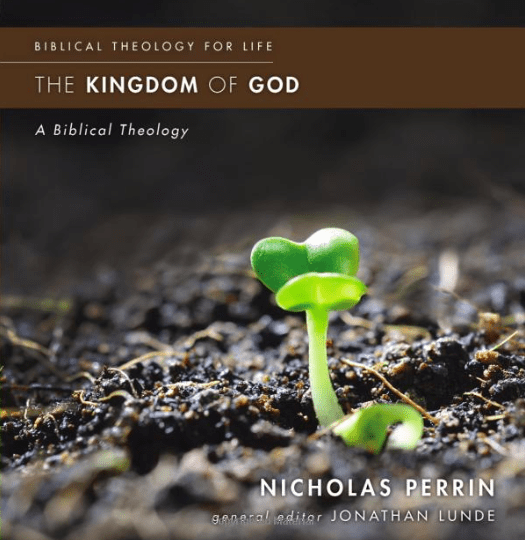 Here’s the situation as I can discern it: a vocal segment of scholarship believes Constantine more or less ruined the church. By combining political power, sometimes described as persecution of those with anything other than Christian faith and the use of coercion to create theological uniformity, with the church, Constantine created “Constantinianism.”
Here’s the situation as I can discern it: a vocal segment of scholarship believes Constantine more or less ruined the church. By combining political power, sometimes described as persecution of those with anything other than Christian faith and the use of coercion to create theological uniformity, with the church, Constantine created “Constantinianism.”
Peter Leithart is out to reclaim the real Constantine and suggest that much of the Constantine of the above sketch is an unhistorical bogeyman.
What would western democracies look like if Constantine’s theory of concord were the guiding principle? Do you think Leithart’s comparison of Constantine with Locke is accurate and useful for today? Do you think Constantine’s empire was tolerant? Was Constantine a Christian? A big one: Have the critics of Constantine misunderstood him and misused him?
Leithart’s book is called Defending Constantine: The Twilight of an Empire and the Dawn of Christendom. For those who are willing to read it carefully and fairly, it will be a powerful challenge to the ruling Constantinianism theory. It would take pages and pages to summarize the details of this book and we can’t do that. So I want to get at some central ideas. I suggest you read the book for yourself to see the details.
First, Leithart argues that Constantine was genuinely converted, and this against the grain of some who think his “conversion” was little more than political powermongering. Here is his summary statement of the “By this sign, conquer” vision of Constantine:
Prior to 312, Constantine’s coinage and military standard honored pagan gods, particularly Sol or Apollo. After 312, he adopted a Christian standard and military insignia and put Christian symbols on his coins, which gradually replaced pagan signs. Something happened in between. Constantine said he changed because he received a sign from the Christian God. Was that true?
I believe the answer is yes.
That is the first plank in this book, and he goes on to support it in Constantine’s own words about how he saw his responsibility before God. Divisions in the church and empire displeased God; he wanted God’s favor. Furthermore, Constantine, and here he quotes Timothy Barnes — major Constantine scholar, believed his mission was to convert the Roman empire to Christianity.The second is this: Constantine’s essential policy toward other faiths was one of toleration, not coercion or violence or force. Here Leithart draws out the connection between Constantine and Lactantius, and he argues that Constantine relied upon and developed Lactantius’ theory of toleration, a view of toleration that moves in the direction of toleration in our world. What needed respect was the will and the free mind of the Roman empire. People could worship the god of their choice.
Thus, Constantine tolerated paganism and Judaism, though his attitudes over time shifted. Here’s a good indicator: “anyone who delights in error, should be made welcome to the same degree of peace and tranquility which they have who believe.” It’s all here: Constantine was a Christian; he believed in it truthfulness; he would tolerate those with other beliefs; he still saw them as error.
Most importantly, Constantine created an atmosphere wherein Christianity was not only favored but wherein others felt the pressure to convert. Leithart thinks Constantine was more like Billy Graham than a theocrat with a sword.
In other words, against John Howard Yoder, Constantine did not decide everyone had to be a Christian.
And now a third point: Constantine ended sacrifice in the Roman empire. This is no small issue to Leithart. He made an edict to end sacrifice though there is precious little evidence that he enforced the edict. He made it difficult to sacrifice. This was Constantine’s style according to Leithart.
Leithart finds the same policy with respect to heresies. Prohibit them but no sign he thoroughly enforced his edicts.
On Judaism, he sees a tightening and a contempt, but he knows that Augustine later would re-Judaize Christianity. He did have contempt for Jews but his policies did not change the lives of ordinary Jews, and he actually had laws that gave rabbis the same privileges one finds with priests. Again he’s after Yoder’s theories on the de-Judaization of Christianity under Constantine.
Finally: Constantine moved from toleration to concord. That is, he moved from tolerating other faiths — on principle defending human choice and protecting choice — to concord. Concord means he he practiced forbearance as a means of or until conversion occurred. He formed a Christianized public and that put pressure on others to convert.
Leithart thinks Constantine’s honest policy is superior to Locke’s for Locke forced religion into the inward dimension and gave authority to the State. Locke’s theory, he argues, turns into the tyranny of the majority and cedes authority to the civil magistrates/State.










